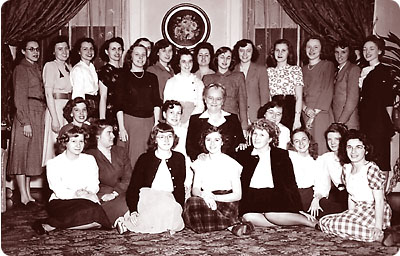Timelines
1918
A few years after 45 Lutherans assembled in First English Lutheran Church in Baltimore to organize and adopt a constitution for “The Inner Mission Society of the Evangelical Lutheran Church of Baltimore and Vicinity” in 1913, the society’s first superintendent, the Rev. Frederick W. Meyer, noted “the need to establish a Christian home for non-resident girls.”
The establishment of that home—called a “hospice”—established the role of a pivotal figure in social ministry in Maryland: Sister Zora Heckart. The hospice had opened at 509 Park Avenue in 1917 because Inner Mission society members believed it was important to provide a faith-based home for non-resident young woman coming to Baltimore to work or attend educational institutions.
Sister Zora was a 1916 graduate of the Baltimore Lutheran Deaconess Motherhouse at 2500 West North Avenue. Two years after her graduation, she joined the Lutheran Hospice as housemother, serving in that role until 1958, when she became housemother for students at the Deaconess school.
During her 40-year tenure, Sister Zora created a Christian home for more than 800 young women. Admired for her administrative skills and deep sense of dedication, she showed personal interest in each member of her “family.”
On the 25th anniversary of her service, she wrote: “I am indeed thankful for the blessed privilege of service in the Master’s name. The joys and friendships which only service can give are my most treasured memories.”
Today, the award for significant social ministry in the Delaware-Maryland Synod is named in Sister Zora Heckart’s memory. Diakon Lutheran Social Ministries continues the heritage of service begun by the Inner Mission Society.


